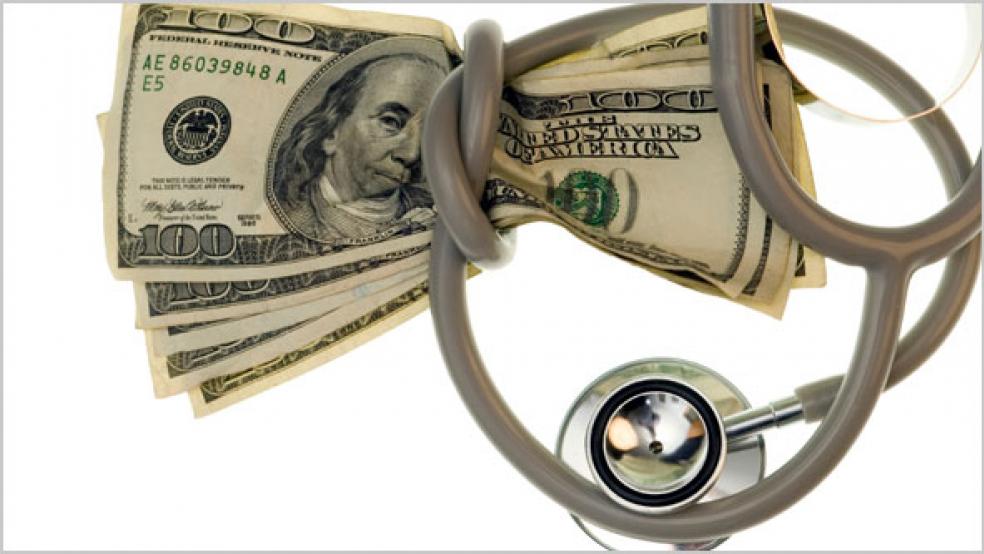
Beyond the headlines of the rocky roll-out of the Affordable Care Act, also known as Obamacare, is a much more dramatic story. Many in Congress want to axe the Sustainable Growth Rate that pays physicians for Medicare patients.
If Congress succeeds in scrapping legislation that caps doctor payments for Medicare, it may replace it with a game-changing formula that represents a new paradigm for healthcare compensation.
The SGR, hated by doctors and sidestepped by lawmakers on an annual basis, will automatically force a 24-percent cut in physician payments next year, unless Congress votes to abandon it. That seems likely. To date, though, Congress has voted 15 times since 2002 to override the SGR with temporary "doc fixes."
RELATED: ‘DOC FIX’ WILL CUT MEDICARE HOSPITAL PAYMENTS
A new bill introduced in the House Energy and Commerce Committee on July 19, proposes to replace the SGR with a raise of 0.5 percent annually from 2014 to 2018. The following year, that annual increase will hold, except for those in fee-for-service programs. They could qualify for higher increases if they participate in an "update incentive program" and are able to prove that they're providing higher-quality care.
Why change the doctor-payment formula? The SGR has been universally reviled by physicians, who have vigorously lobbied against it for more than a decade and have said it doesn't reflect their costs of doing business. They also don't like the government setting their fees.
The reaction to nixing the SGR has been mixed on Capitol Hill and beyond. Doctors' groups are still weighing whether they will support it. There's some bi-partisan support for the concept, but it's too soon to tell whether it has enough votes to pass the House and Senate. It's also not known how changing the rates will impact access to care. Will doctors who don't meet government guidelines for quality care stop taking Medicare patients? Will the modest annual increase allow doctors to pay their bills?
With the House committee bill, a carrot-and-stick approach is employed instead of a command-and-control model. Those who are deemed "high performing" will receive a 1-percent payment bonus. Those who fall below an as-yet-undetermined threshold get penalized by 1 percent. The idea is to offer a direct economic incentive to doctors to focus on delivering above-average care.
DEATH OF FEE-FOR-SERVICE
The subtext of the new legislation is to phase out gradually the fee-for-service model, where doctors can pad their compensation based on the number of procedures and tests performed. That model has been criticized by healthcare economists for years for inflating medical bills and delivering unnecessary and often harmful services.
In tandem with shelving the SGR are promotions of various payment methods that also hasten the death of fee for service. The legislation proposes encouraging greater use of coordinated care, better monitoring of chronic diseases and alternative payment models such as "bundling" payments for specific health episodes.
RELATED: INCENTIVES SPIKE FEE-FOR-SERVICE HEALTH COSTS
A third route in payment reform is to allow doctors to remain in the fee-for-service program, although they will be dinged for doing so. According to Medscape News, "Physicians who go that route, however, would receive only 95 percent of the Medicare fee schedule after 2018. That punishment for FFS traditionalists did not appear in earlier versions of this SGR repeal plan."
Although many of these ideas are being tried out and were embedded in the ACA, the move to accelerate their use is a subtle nod to end fee-for-service sooner, at least in Medicare. The program is already offering incentives for physicians to report quality measures through the Physician Quality Reporting System.
The hope is that Medicare can come up with some gauges to answer some basic questions about how to deliver quality care at a lower cost. How can the government separate high-performing doctors from those over-billing the system for sub-standard care?
The biggest question mark on the SGR appeal, though, will be how much it will cost the federal budget in the sequester-era of aggressive spending cuts. It will certainly ratchet up the federal budget deficit if the more aggressive cost savings of the SGR are eliminated.
The Congressional Budget Office (CBO) estimated in May that dumping the SGR formula (and freezing Medicare rates at their current level for 10 years) would cost $139 billion. An annual 1% raise over 10 years for doctors would cost almost $178 billion.
The CBO has not yet estimated the cost of the draft legislation.
In the interim, the government, academics and policymakers will need to arrive at some universal benchmarks for defining "quality" care.
Although that's still up in the air -- and will take years -- it will revolve around the emerging concept that the government and private payers should pay for performance and outcomes and not numbers of operations and tests. That radical change could bring about billions in savings while improving quality of life.






